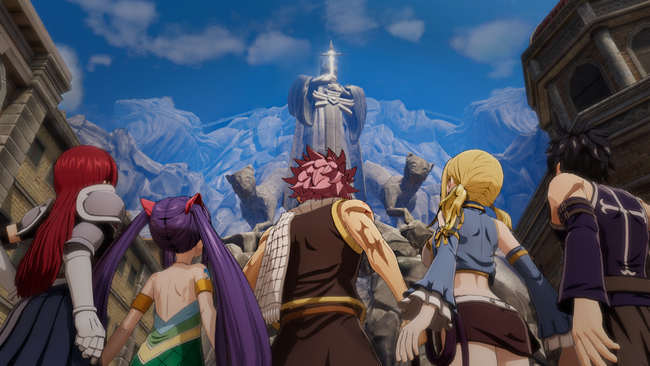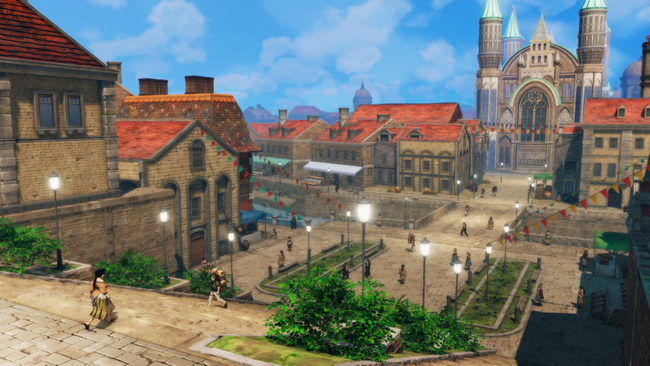
Fairy Tail Review
The popular anime franchise Fairy Tail has been adapted into a JRPG for the first time by Gust, the developer of the Atelier series. Although there have plenty of other Fairy Tail franchise games released in the past, none of them have ever made their way westward until now.
For those unfamiliar, the setting of Fairy Tail is a vast world with guilds that take on various requests, as if they are bounty hunters. For people that are curious where the game takes place within the larger storyline, it actually begins after the time skip, so people that aren't well-versed in the Fairy Tail world might end up a little lost. It picks up just at the end of the Tenrou Island Arc, just in time where the guild is effectively penniless. Although the game tries its best to cover a large chunk of the manga lore for the player, there are far too many gaps that are unexplained, and you are left with an in-game encyclopedia to clarify missing details.
Additionally, the story is told at an accelerated pace, and it often displays a static image while hastily summarizing certain events, because the game doesn't have either the budget or time to explain all the details. This method of storytelling doesn't always transition well, and Fairy Tail - the game - is not really the best place to get introduced to this world. Newcomers probably should look into the manga or the anime if they want to fill in that void.

Like most RPGs, a large portion of the game is related to combat. Coming from the developers of the Atelier games, you can definitely see how the game is heavily inspired by their common battle system components. Combat begins with four basic commands for each of the playable cast, and new functions will develop as you progress further in the game. Things remain pretty simple throughout, as Fairy Tail will never try to overwhelm the player by throwing in too many different mechanics as the player goes on. One notably unique aspect is that unlike most RPGs, running out of MP will also knock out the character, so you have to keep that in mind.
Even though the combat system is probably one of the game's stronger features, it still leaves much to be desired as the game doesn't offer many unique battle encounters to actually take full advantage of the systems in place. For instance, Extreme Magic is only usable in very specific occasions when you find yourself in danger, and ultimately means it rarely gets used, even in boss battles. It’s great to see old Makarov show up and showcase his muscles, but that’s only on rare cases when your HP is super low or when using a Magic Chain. Magic Chains are effectively when chaining your parties’ skills one after another, while Extreme Magic is a finisher that has a low chance of happening.
Another issue with combat is how weirdly balanced some of the encounters can be. For example, during a D-rank request in the Great Plains (where the game recycles an old enemy type) I encountered random enemy mobs that could easily wipe out my party; not even bosses were this strong. This oddly happens pretty often, where you would find a regular monster being more formidable than storyline bosses for no discernible reason.

When not in battle, you are spending time to expand your guild, usually by taking on bounty requests. These requests often involve spending time to kill certain enemies or other typical fetch quest motives; none of them felt really inspired. Most of the requests are fairly quick and can be cleared within minutes. Some requests - the best ones - are mini-side stories that accompany the characters, but most tend to fall into the 'Kill X amount of monsters' type, and it gets pretty boring pretty quickly. Guild expansion is simple: do requests, get jewels (currency), and use your hard-earned loot to upgrade the facilities. Much of this is story-locked, though, and you can’t get a certain capability until you get further into the game.
The overall presentation is probably the strongest aspect of this game, as the world of Fairy Tail is faithfully created with attention to detail of the setting. There is some lack of detail in other areas, such as Lucy’s summons, where Leo gets a full animation for his attack but Capricorn and Scorpio only get a still image that appears as a cut-in substitute. Some battle animations are faithful to the attacks from the anime, although they are nowhere near as flashy. After a while, the animations can get tedious, though luckily there is an option to skip all that, so you’re not stuck at watching it every time.

Although the game looks great from the outside, there are some glaring issues. The game sometimes can take quite a while to load on Nintendo Switch, sometimes even a whole minute depending on where you are going. There are also many recycled enemy models, too, with some of the worst offenders coming with the many quest monsters.
For those that have watched the Fairy Tail anime, you’ll feel right at home with the music. Much of the soundtrack will feel familiar to the series; it is generally very upbeat and has a variance to some of the Fairy Tail originals. It's worth noting for players that grew up watching the anime, the game is only Japanese dubbed, so those who watched the show in English might be disappointed that an English dub isn't included.
Behind the game's accurate depiction of the Fairy Tail world, I am not quite sure if this game adaptation offers much to anyone besides diehard fans. If a player is already not into the anime or manga, the game doesn't do a great job introducing the Fairy Tail world, and the systems in play aren't especially interesting on their own as an RPG. Fans will get a kick out of the Fairy Tail game, but it's hard to recommend otherwise.